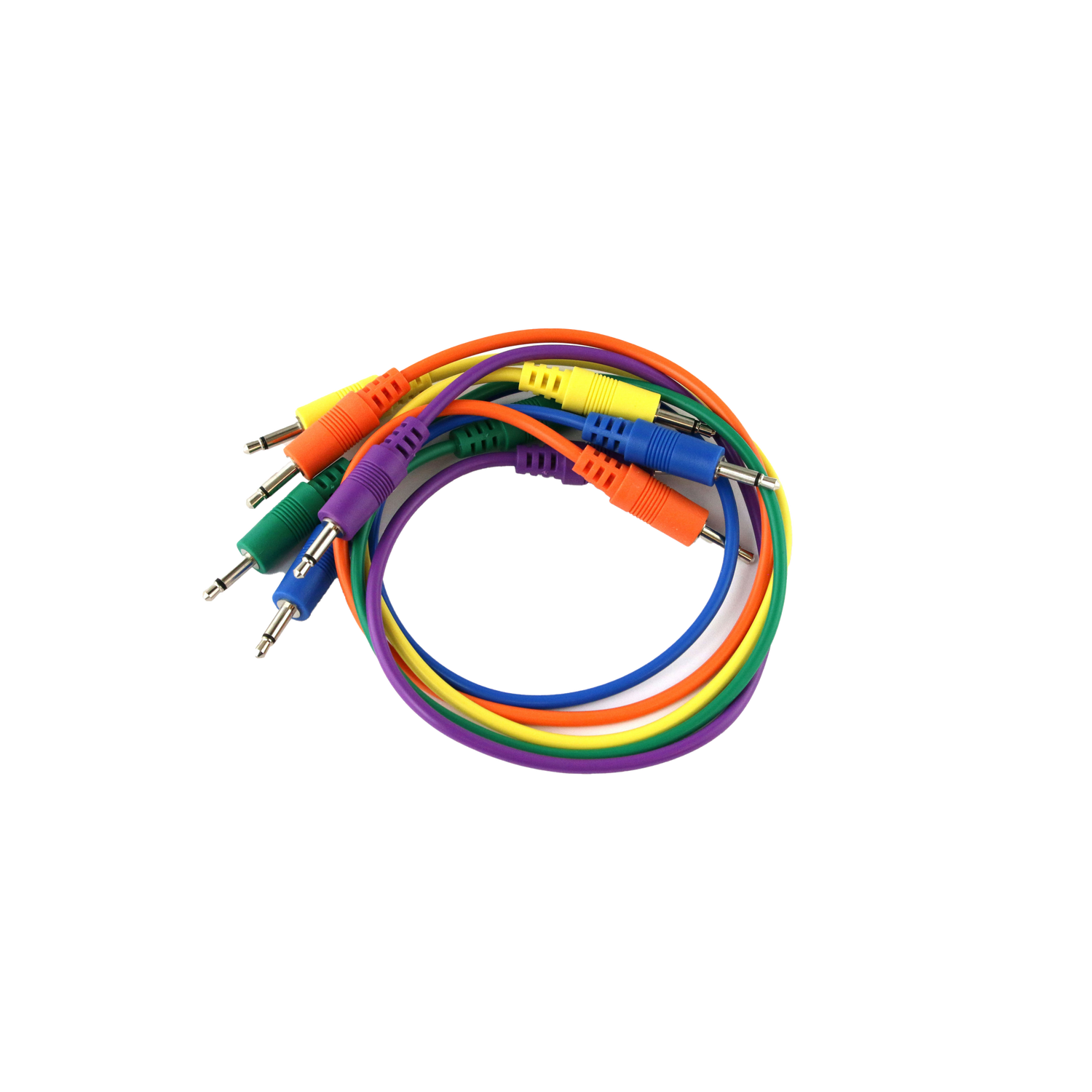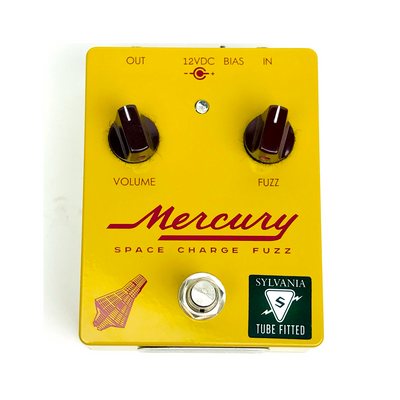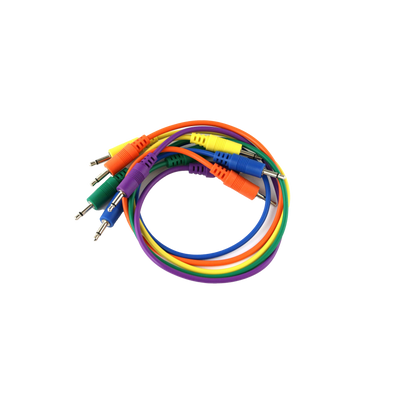1
/
of
1
ZVEX Nano Head Tube Amp
ZVEX Nano Head Tube Amp
Regular price
$ 699.00 USD
Regular price
Sale price
$ 699.00 USD
Unit price
/
per
Shipping calculated at checkout.
Couldn't load pickup availability
READ ALL INSTRUCTIONS BEFORE OPERATING YOUR NANO HEAD.
Bravo! You are the owner of the world's smallest production tube amp, the Nano Head by Z.Vex Amps. This little marvel is a one-half watt (distorted) powerhouse that will surprise you with its apparent volume. Plug it into a 4X12 (or any 8 to 16 ohm speaker) and listen to it roar! This amp is voiced to deliver classic rock tone, with a very high level of crunch available if it's wanted. Just crank the volume knob around to the level of distortion you desire, from a very quiet (one tenth watt) clean mode to a micro-Marshall (TM) blast when cranked up. I am making myself a little ill (gag!) trying to describe the tone of my Nano, using the same tired old phrases that all the amp and distortion box makers use, but I think it's true... it does a great job of emulating big amps at very reasonable volumes, which makes it exceptionally nice for recording.
In a recording situation, you stick microphones in front of guitar amps and hope for the best, but often the sheer sound pressure level necessary to get what sounds like a really cool tone is so ungodly high that it causes mic distortion that wrecks the sound. You might try putting a nice Coles ribbon or a Beyer M160 in front of the amp, but at 140 dB it could easily cause weird sounds as the ribbon rattles around in the magnetic field, stretching and possibly striking the magnet as it goes past the boundaries of its gap. A classic condenser microphone under that kind of crushing pressure can end up with a stretched diaphragm that can touch from front to back, suddenly shutting down, or overloaded preamp circuitry, adding unwanted harshness. Even a dynamic mic like a Shure 57 or 58 can have problems as the severe magnetic field developed by high-wattage amps couples through the air into the mic's own windings, causing a blistering crispiness that seems very unnatural when it shows up in your recording. You can spend hours trying to find a safe spot to put your mics when trying to accurately capture the sound of a roaring high-wattage amp, and in the end, find that the best sound is miced so far from the cab that you begin to hear the room and everything else that's bleeding in. By the time you've got a sound you like, someone has called the cops and you have to shut down for the night.
The Nano Head eliminates many of these microphone problems instantly because it is at least 20 dB quieter than a 50 watt head, so that the volume levels coming from your speaker cabinet are very close to the levels that a loud singer can produce. The amp is capable of going into total saturation, struggling like crazy and sweating up a storm at this moderate volume, so no matter where you put the microphone it's safe signal level that won't overload your preamps or strain the microphone's element. The result is a crystal-clear reproduction of the speaker's sound. The other high-volume factors that can mess up your ears (there's something called the Fletcher-Munson curves that change the way your ears hear things at high volumes) are much reduced, too, so the characteristic of the sound you hear in the room will be much closer to the recorded sound. The first time I put a mic in front of my Orange 4X12 with greenbacks while it was connected to a Nano Head, I was stunned at how accurately the recording matched the tone of the cabinet on playback, and was delighted that I could set the mic position while wearing headphones in the same room and find the exact spot I wanted to capture. After 10 years working full-time as a recording engineer (my former job), this is one of the first times I've been able to get a great guitar tone on the first try. I have such painful memories of trying to capture huge tones and just failing miserablyナ gahh!
Specifications: Power Supply: 12VDC 1.5 A wall wart, included. Output Power: .5 W dirty, .1 W clean.
Output Impedance: 8-16 ohms. Input Impedance: 1,000,000 ohms. Internal Speaker: .4 Watts.
WARNING: DO NOT CONNECT OUTPUT OF NANO TO ANOTHER AMP'S INPUT. THE NANO IS AN AMP, NOT AN EFFECT, AND MUST BE CONNECTED ONLY TO A SPEAKER CABINET UNLESS AN ATTENUATOR SUCH AS THE THD HOTPLATE IS USED TO PROCESS THE SIGNAL AND PROVIDE A LOAD. CAREFUL,YOU COULD DAMAGE OR DESTROY BOTH AMPLIFIERS!
Controls (from right to left):
Bright switch: Brighter to the right. Has more effect at lower volumes, like a Fender bright switch.
Volume: Adjusts from quite clean to very crunchy/dirty.
Thickness: Positions are Normal, Thin, and Fat. As you use more gain, you may wish to thin out the signal. The fat setting is best for clean shivery tones and overblown bass fuzz.
Mellow control: Positions are Mellow 2/Normal/Mellow 1. Use it to roll off treble if needed after first distortion stage. Mellow 2 is mellower, naturally, and Normal is brightest.
Other features:
Cooling fan: Yes, as unbelievable as it may seem, there is a one-inch cooling fan in the Nano Head.
DO NOT BLOCK FAN. Also, if you sit too close, fan noise may bleed into pickups.
This appears as a whining tone. Move a few inches further away or twist slightly and it will disappear.
The fan keeps the 230 volt power supply and the tubes and caps cool.
Internal speaker: This is a bit of a joke... it is only useful if you really, really have to listen to it without a cabinet. Don't expect too much from it... it's made of plastic! You can tilt the amp or turn it over to hear the speaker better. What an annoying sound, huh? 8^)
"Hot" red LED: The Nano Head has a self-resetting fuse that blows if the power supply stalls. This can happen if the input power is interrupted and reconnected, or if the DC power sags too low, such as a battery dying. Disconnect the amp for a few minutes and try again if the "Hot" LED comes on. The self-resetting fuse has to have time to cool before it will work again.
For best results, use with a 16 ohm (or 8 ohm) cabinet. I prefer a Marshall/Orange 4X12 or a Vox extension cabinet, but try anything you like.
Your Nano perfers a startup temperature of 65 degrees F (18 degrees C) or more. If it is cold, the unit may have difficulty starting. Warm it up first! You may wish to store it somewhere warm, like near a radiator or by some gear that's always on.
Use only with 12 volt power supply included with unit, or a 12 volt lead-acid battery capable of supplying 1.5 amps for startup current. Unit draws .5 amps while operating but needs more current to start. If the "hot" light comes on, let the Nano cool for 5 minutes before reconnecting. You may have better luck by connecting the power supply to the wall first and then to the Nano Head if you have blown the internal fuse and are in a hurry to restart the unit. Also, if you are waiting for it to cool, turn it right-side-up to release heat from the inside of the unit. Feel free to hold it out the van window while driving fast.
Warning: UNIT CONTAINS DANGEROUS VOLTAGES (internal 230 volt supply). DO NOT OPEN. NO USER SERVICEABLE PARTS INSIDE. Contact Z.Vex Effects should service become necessary. DO NOT PUSH ON OR PULL ON TUBES. DO NOT PUT PRESSURE ON SILVER CAPACITORS INSIDE ROLL BARS. DO NOT ALLOW LIQUIDS TO ENTER UNIT! If this happens, REMOVE POWER SUPPLY FROM OUTLET IMMEDIATELY. Use only with supplied 1.5 Amp power supply, or "hot" light may turn on, disabling amplifier. Other power supplies may cause hum.
Bravo! You are the owner of the world's smallest production tube amp, the Nano Head by Z.Vex Amps. This little marvel is a one-half watt (distorted) powerhouse that will surprise you with its apparent volume. Plug it into a 4X12 (or any 8 to 16 ohm speaker) and listen to it roar! This amp is voiced to deliver classic rock tone, with a very high level of crunch available if it's wanted. Just crank the volume knob around to the level of distortion you desire, from a very quiet (one tenth watt) clean mode to a micro-Marshall (TM) blast when cranked up. I am making myself a little ill (gag!) trying to describe the tone of my Nano, using the same tired old phrases that all the amp and distortion box makers use, but I think it's true... it does a great job of emulating big amps at very reasonable volumes, which makes it exceptionally nice for recording.
In a recording situation, you stick microphones in front of guitar amps and hope for the best, but often the sheer sound pressure level necessary to get what sounds like a really cool tone is so ungodly high that it causes mic distortion that wrecks the sound. You might try putting a nice Coles ribbon or a Beyer M160 in front of the amp, but at 140 dB it could easily cause weird sounds as the ribbon rattles around in the magnetic field, stretching and possibly striking the magnet as it goes past the boundaries of its gap. A classic condenser microphone under that kind of crushing pressure can end up with a stretched diaphragm that can touch from front to back, suddenly shutting down, or overloaded preamp circuitry, adding unwanted harshness. Even a dynamic mic like a Shure 57 or 58 can have problems as the severe magnetic field developed by high-wattage amps couples through the air into the mic's own windings, causing a blistering crispiness that seems very unnatural when it shows up in your recording. You can spend hours trying to find a safe spot to put your mics when trying to accurately capture the sound of a roaring high-wattage amp, and in the end, find that the best sound is miced so far from the cab that you begin to hear the room and everything else that's bleeding in. By the time you've got a sound you like, someone has called the cops and you have to shut down for the night.
The Nano Head eliminates many of these microphone problems instantly because it is at least 20 dB quieter than a 50 watt head, so that the volume levels coming from your speaker cabinet are very close to the levels that a loud singer can produce. The amp is capable of going into total saturation, struggling like crazy and sweating up a storm at this moderate volume, so no matter where you put the microphone it's safe signal level that won't overload your preamps or strain the microphone's element. The result is a crystal-clear reproduction of the speaker's sound. The other high-volume factors that can mess up your ears (there's something called the Fletcher-Munson curves that change the way your ears hear things at high volumes) are much reduced, too, so the characteristic of the sound you hear in the room will be much closer to the recorded sound. The first time I put a mic in front of my Orange 4X12 with greenbacks while it was connected to a Nano Head, I was stunned at how accurately the recording matched the tone of the cabinet on playback, and was delighted that I could set the mic position while wearing headphones in the same room and find the exact spot I wanted to capture. After 10 years working full-time as a recording engineer (my former job), this is one of the first times I've been able to get a great guitar tone on the first try. I have such painful memories of trying to capture huge tones and just failing miserablyナ gahh!
Specifications: Power Supply: 12VDC 1.5 A wall wart, included. Output Power: .5 W dirty, .1 W clean.
Output Impedance: 8-16 ohms. Input Impedance: 1,000,000 ohms. Internal Speaker: .4 Watts.
WARNING: DO NOT CONNECT OUTPUT OF NANO TO ANOTHER AMP'S INPUT. THE NANO IS AN AMP, NOT AN EFFECT, AND MUST BE CONNECTED ONLY TO A SPEAKER CABINET UNLESS AN ATTENUATOR SUCH AS THE THD HOTPLATE IS USED TO PROCESS THE SIGNAL AND PROVIDE A LOAD. CAREFUL,YOU COULD DAMAGE OR DESTROY BOTH AMPLIFIERS!
Controls (from right to left):
Bright switch: Brighter to the right. Has more effect at lower volumes, like a Fender bright switch.
Volume: Adjusts from quite clean to very crunchy/dirty.
Thickness: Positions are Normal, Thin, and Fat. As you use more gain, you may wish to thin out the signal. The fat setting is best for clean shivery tones and overblown bass fuzz.
Mellow control: Positions are Mellow 2/Normal/Mellow 1. Use it to roll off treble if needed after first distortion stage. Mellow 2 is mellower, naturally, and Normal is brightest.
Other features:
Cooling fan: Yes, as unbelievable as it may seem, there is a one-inch cooling fan in the Nano Head.
DO NOT BLOCK FAN. Also, if you sit too close, fan noise may bleed into pickups.
This appears as a whining tone. Move a few inches further away or twist slightly and it will disappear.
The fan keeps the 230 volt power supply and the tubes and caps cool.
Internal speaker: This is a bit of a joke... it is only useful if you really, really have to listen to it without a cabinet. Don't expect too much from it... it's made of plastic! You can tilt the amp or turn it over to hear the speaker better. What an annoying sound, huh? 8^)
"Hot" red LED: The Nano Head has a self-resetting fuse that blows if the power supply stalls. This can happen if the input power is interrupted and reconnected, or if the DC power sags too low, such as a battery dying. Disconnect the amp for a few minutes and try again if the "Hot" LED comes on. The self-resetting fuse has to have time to cool before it will work again.
For best results, use with a 16 ohm (or 8 ohm) cabinet. I prefer a Marshall/Orange 4X12 or a Vox extension cabinet, but try anything you like.
Your Nano perfers a startup temperature of 65 degrees F (18 degrees C) or more. If it is cold, the unit may have difficulty starting. Warm it up first! You may wish to store it somewhere warm, like near a radiator or by some gear that's always on.
Use only with 12 volt power supply included with unit, or a 12 volt lead-acid battery capable of supplying 1.5 amps for startup current. Unit draws .5 amps while operating but needs more current to start. If the "hot" light comes on, let the Nano cool for 5 minutes before reconnecting. You may have better luck by connecting the power supply to the wall first and then to the Nano Head if you have blown the internal fuse and are in a hurry to restart the unit. Also, if you are waiting for it to cool, turn it right-side-up to release heat from the inside of the unit. Feel free to hold it out the van window while driving fast.
Warning: UNIT CONTAINS DANGEROUS VOLTAGES (internal 230 volt supply). DO NOT OPEN. NO USER SERVICEABLE PARTS INSIDE. Contact Z.Vex Effects should service become necessary. DO NOT PUSH ON OR PULL ON TUBES. DO NOT PUT PRESSURE ON SILVER CAPACITORS INSIDE ROLL BARS. DO NOT ALLOW LIQUIDS TO ENTER UNIT! If this happens, REMOVE POWER SUPPLY FROM OUTLET IMMEDIATELY. Use only with supplied 1.5 Amp power supply, or "hot" light may turn on, disabling amplifier. Other power supplies may cause hum.
Share













